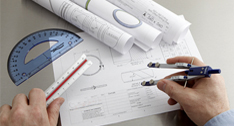Design Consultation |
|||||||||||||||||||||||||||||||||||||||||||||||||||||||||||||||||||||||||||||||||||||||||||||||||||||||||||||||||||||||||||||||||||||||||||||||
|
Standard Tolerance ChartThe following tolerance information is for reference purposes only and is intended to provide an indication of the types of tolerances which can be achieved with a molded part. This chart does not represent a guarantee of the tolerances which can be achieved in all cases. In many instances, specific part geometry will affect the precision of the tolerances which can be achieved. Please contact our Customer Service Group if you need a tolerance assessment conducted for a specific product. Recommended Tolerances
We will ask questions to help us better understand your application like: What will be the function of the part?
What is the environment in which it will function?
How long must it perform correctly?
What will it seal against ? How hard does the material need to be ? Elastomeric materials are available in a wide variety of hardnesses, from 20 Shore A to 90 Shore A for thermoset rubbers, to even harder materials (Shore D scale) for thermoplastic elastomers. The most common hardness range for materials is from 50 Shore A to 80 Shore A, with most sealing products being made from materials with a hardness of 70 Shore A. The actual hardness which will be selected depends upon your exact application. We will try to help you avoid common design mistakes: The following is a list of common problems sometimes encountered when designing rubber parts, and some suggestions for avoiding them.
|
||||||||||||||||||||||||||||||||||||||||||||||||||||||||||||||||||||||||||||||||||||||||||||||||||||||||||||||||||||||||||||||||||||||||||||||



 All Seals has spent the last 40 years helping our customer optimize the seal engineering. Our Consultation includes:
All Seals has spent the last 40 years helping our customer optimize the seal engineering. Our Consultation includes: